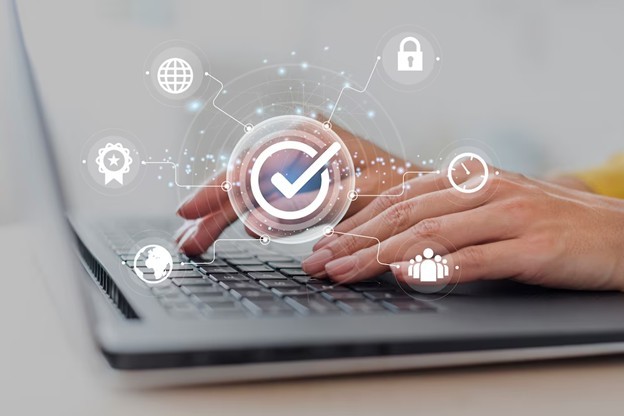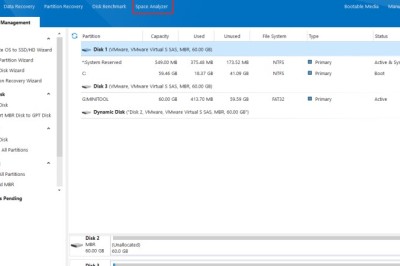views

Social media is a big part of our lives these days. Its influence spans all aspects, from personal interactions to professional collaborations, shaping how we connect and communicate. However, as we enjoy the convenience these platforms provide, there's a downside that's often overlooked - cybersecurity threats. The intersection of social media and cybersecurity is a complex web requiring continuous vigilance and robust cybersecurity services to navigate.
The Rising Threats
Social media, with its billions of users worldwide, has become a hotbed for cybercriminal activities. Unwary individuals and organizations fall prey to various malicious schemes, leaving their personal and financial information vulnerable. The most prevalent threats include:
Phishing Attacks:
These attacks are among the favorite tools in a cybercriminal's arsenal. Perpetrators cleverly disguise themselves as trusted entities on social media platforms, often adopting the same or similar names, logos, and graphics. They then use tactics like urgent messaging or attractive offers to lure victims into revealing sensitive information such as login credentials, credit card numbers, or social security numbers. They may also trick users into clicking on malicious links that download harmful software onto their devices. Always remember, if something seems too good to be true on social media, it probably isn't.
Identity Theft:
The social media landscape is a treasure trove of personal information. People innocently share details about their lives, often without realizing the risk they are courting. Cybercriminals can piece together this information to build comprehensive profiles of potential victims, leading to identity theft. They can use these stolen identities to commit fraud, create fake accounts, or even manipulate relationships.
Malware Distribution:
Malicious software, or malware, is an omnipresent threat on social media platforms. Cybercriminals often cleverly disguise malware as intriguing content, applications, or attachments. Unsuspecting users, enticed by curiosity or the promise of freebies, may download these harmful programs by clicking on infected links or files. Once installed, the malware can corrupt systems, steal information, or even lock users out of their own devices.
Data Breaches:
The sheer volume of data shared and stored on social media makes these platforms ripe targets for data breaches. Hackers employ various techniques, including brute-force attacks, data scraping, and even insider threats, to gain unauthorized access to this information. The stolen data can be used for various nefarious purposes, including blackmail, identity theft, or financial fraud. In more sinister cases, information from these breaches could end up on the dark web, available to the highest bidder.
Best Practices for Mitigating Risks
While the threat landscape may seem daunting, there are several best practices individuals and organizations can adopt to enhance their cybersecurity posture. These measures, often offered as part of comprehensive cybersecurity services, can help you navigate the social media space more safely.
Regularly Update and Review Privacy Settings: Social media platforms often update their privacy policies and settings. Regularly reviewing and updating these can help you control what information you share and who can see it.
1. Two-Factor Authentication (2FA): Enable 2FA wherever possible. It adds an extra layer of security by requiring another piece of information apart from your password.
2. Secure Password Practices: Use unique and complex passwords for each social media platform. Password managers can be handy tools for creating and storing complex passwords.
3. Avoid Clicking on Suspicious Links: Be wary of clicking on links, even if they appear to come from trusted sources. These could lead to malicious websites or download harmful software.
4. Be Selective About Sharing Personal Information: The less personal information you share, the less likely it is to be used against you.
5. Educate and Train Staff: For organizations, it's critical to provide regular cybersecurity training. Staff should understand the risks involved in social media use and how to identify potential threats.
The Role of Cybersecurity Services
Professional cybersecurity services play a crucial role in mitigating the risks associated with social media. They provide a comprehensive set of tools and practices designed to protect individuals and organizations from cyber threats.
Some of the key services include:
● Threat Monitoring and Detection: Cybersecurity services constantly monitor your digital footprint for any potential threats or attacks.
● Incident Response and Recovery: In the event of a security breach, these services can help minimize damage and recover lost or compromised data.
● Risk Assessment and Management: Cybersecurity professionals can assess your social media usage and devise strategies to manage potential risks effectively.
● Training and Education: As part of their offerings, cybersecurity services often include training programs to educate individuals and staff about potential threats and best practices for avoiding them.
In conclusion, the rise of social media has brought a new era of cybersecurity threats. However, with vigilance, best practices, and professional cybersecurity services, we can ensure that we make the most of the digital age's conveniences without falling victim to its potential pitfalls. It's about embracing the power of social media while recognizing the responsibilities it entails - a delicate balance that requires our ongoing attention and effort.

























Comments
0 comment